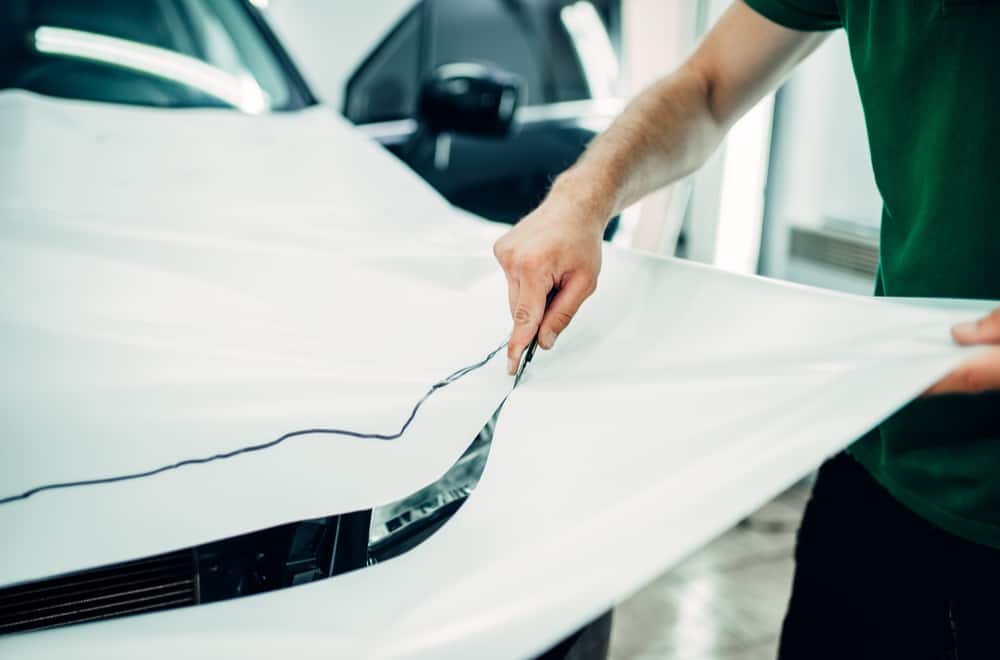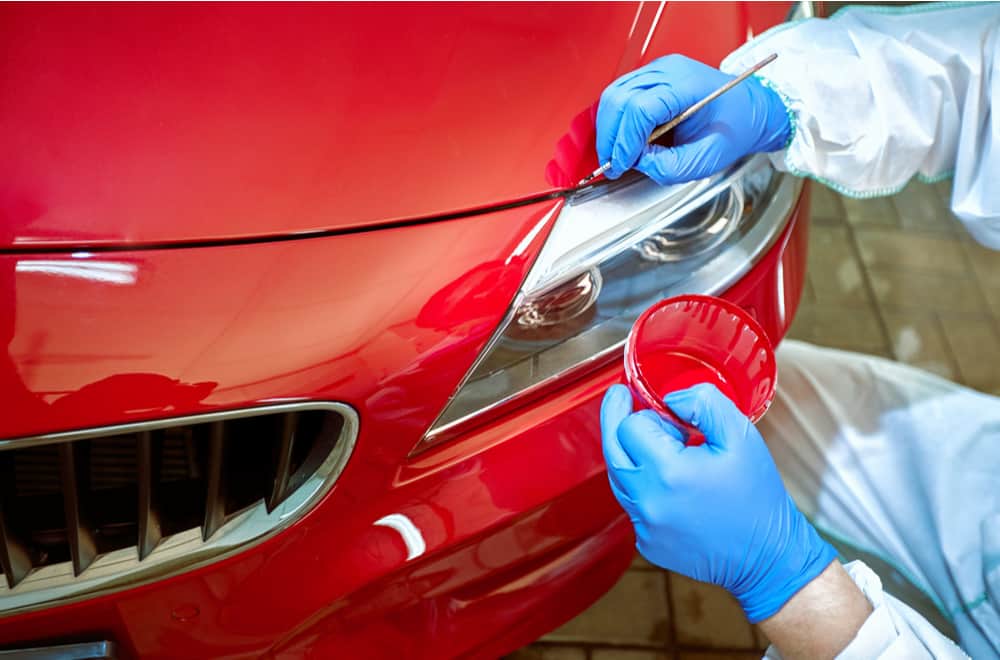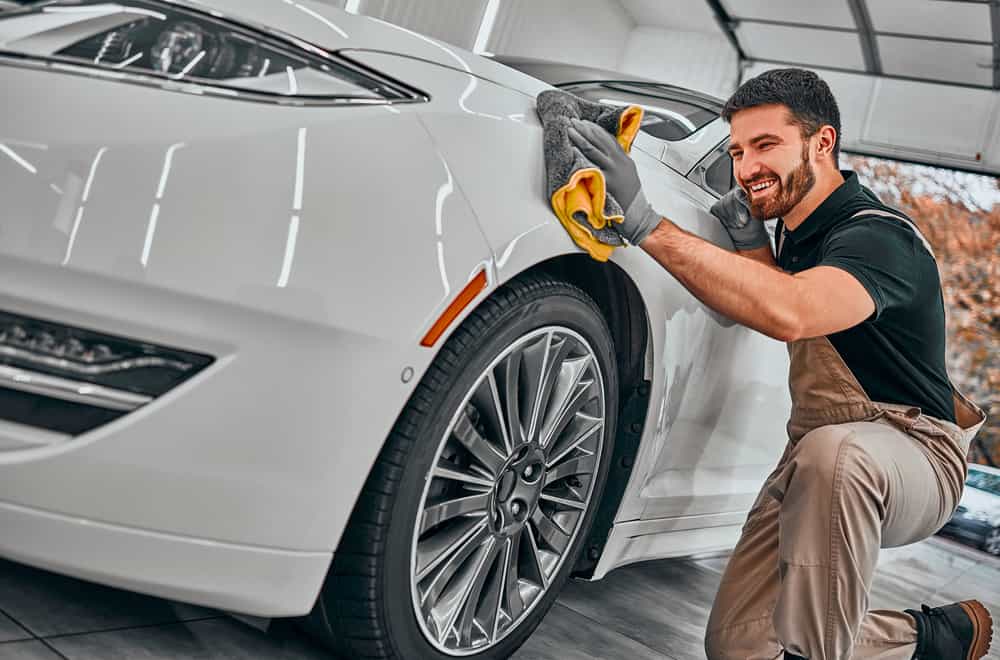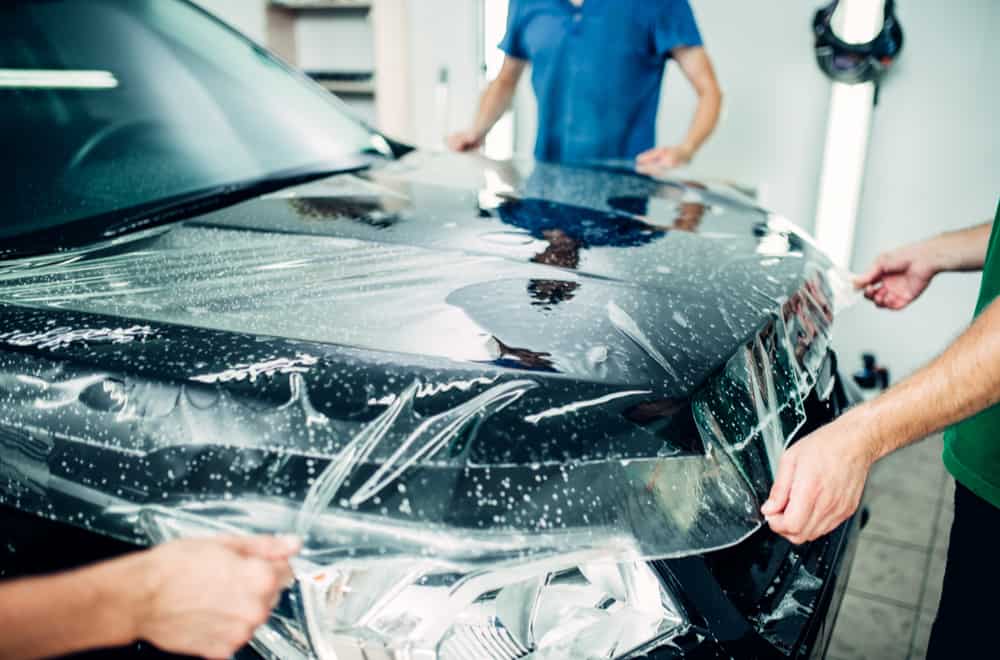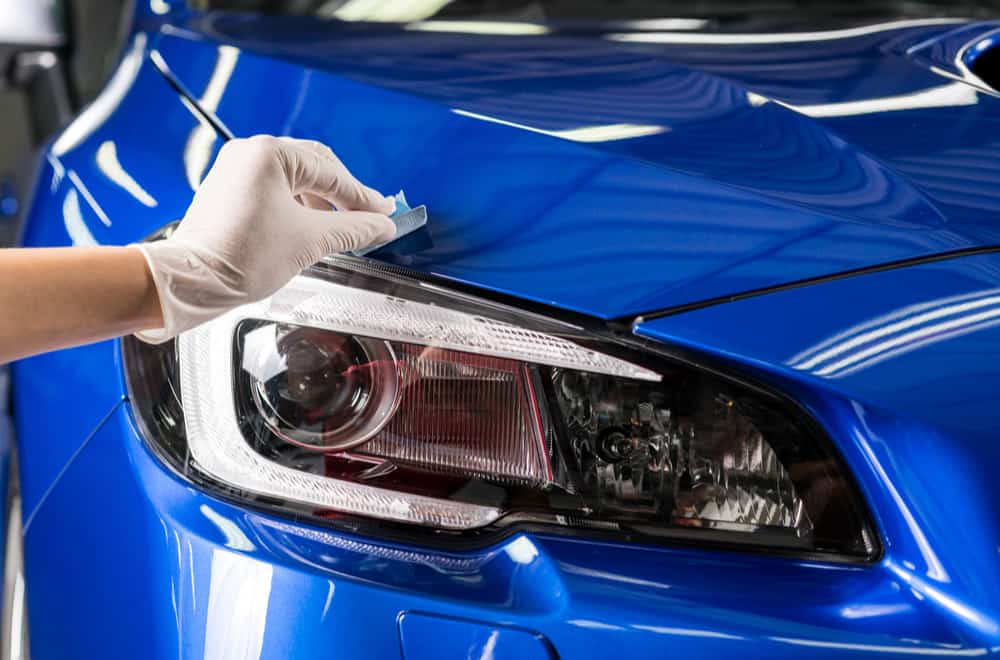Most drivers, who wanted to change their vehicles’ look, used paint or vinyl wrap for that purpose in the past. Nowadays, you have one more fantastic option that can transform your car without much money and effort. If you are one of those who hesitate to try a new product, you should check the crucial differences between vinyl wrap vs. Plasti-Dip.
Only then can you decide to buy an affordable Plasti-Dip kit or stick to a traditional wrap cover that lasts longer. Both options come with numerous advantages and a few downsides that will affect your final decision. Whatever you choose, unique customizing your car will undoubtedly bring you joy.
Table of Contents
Vinyl Wrap
Vinyl wrap is basically a sizable decal applied to the car surface over the existing paint. Be aware that it is illegal in some regions and states, and you should check the law and local regulations before wrapping your vehicle.
Thanks to modern adhesive, vinyl wraps last almost a decade nowadays. The best thing is that you can choose among hundreds of reversible options and change wraps when desired.
You can apply them to advertise your company or products or only to beautify your vehicle. Additionally, vinyl wrap increases your car’s resale value by protecting original paint from harsh weather, fading, bug damage, chipping, and scratching.
Pros
- You can find vinyl wraps in numerous colors and a few finishes, such as matte, glossy, and leather-like
- It is quickly removable when needed, increasing vehicle value with preserved original color
- Quality vinyl wrap is durable and unique
- Such a wrap doesn’t change warrant agreements
- It resembles paint but is more affordable
Cons
- Vinyl wrap changes color under long-lasting sunlight exposure
- You need to check and follow legal procedures about wrap installation
- Vinyl wraps are available in different quality levels, which are sometimes not in accordance with the requested price
Plasti-Dip
This new option is popular, thanks to its low price and quick application. The waterproof rubberized coating protects the car paint from damage and bad weather.
Initially, customers used this product in spray cans to apply it to home items. Later, manufacturers developed a formulation specific for vehicles and started to sell it in buckets of several gallons.
Pros
- Plasti-Dip is a waterproof and high-temperature resistant solution for your vehicle
- You can effortlessly peel it off without damaging the original paint
- Application is effortless, and you can get seamless coverage even when doing it as a DIY project
- It is an affordable product
Cons
- Plasti-Dip comes in limited color options
- Its lifespan is shorter than a standard vinyl wrap
Vinyl Wrap vs. Plasti-Dip
Nowadays, you can find several successful ways to beautify and protect your vehicle besides traditional paint. However, most car owners choose between the vinyl wrap and Plasti-Dip as reliable and quality options.
Both are excellent when you plan to change the external vehicle’s appearance without much work and expenses. Plus, wrapping and dipping protect the original car paint from wear, fade, and damage. Which one is better for you depends on your needs, taste, goals, and budget.
Vinyl wrap vs. Plasti-Dip |
||
| Feature | Plasti-Dip | Vinyl wrap |
| Appearance | Matte or glossy finish | Numerous textures and colors |
| Durability | Moderately durable | Durable |
| Lifespan | 3 to 5 years | 5 to 10 years |
| Protection level | Excellent against chips and scratches | Perfect against bad weather and fading |
| Customization | Less flexible | Flexible |
| Installation | DIY project or professional installation | DIY project or professional installation |
| Application time | 6 hours | Several days |
| Maintenance | Soapy water | Soapy water |
| Removability | Effortless and quick | Effortless and quick |
| Price | $250 to $750 | $2,500 to $6,000 |
Aesthetics
You can quickly recognize the differences in the visual attractiveness between dipping and wrapping, but which looks better is a matter of taste.
Traditional Plasti-Dip was limited to matte colors, but manufacturers have managed to produce shining coating over time. However, you need to pay extra for this option. On the other hand, you can find endless vinyl finish options nowadays, including:
- Matte
- Glossy
- Chrome
- Metallic
- Mirrored
- Carbon fiber
All these vinyl types come in numerous colors, plus you can combine and match patterns and graphics to make your vehicle unique. Such a thing is impossible to achieve with Plasti-Dip.
Remember that applying Plasti-Dip rubber coating to rusty surfaces is impossible without previous sanding and smoothing. On the other hand, you can glue vinyl wrap only to the painted surface.
Quality
Vinyl wrap is always a more quality option than Plasti-Dip, which tends to peel off over time. Ultimate wrap material bonds better to the car paint, have a better finish and has a longer lifespan.
While it is hard to notice a difference between paint and vinyl wrap, it is not the case with Plasti-Dip.
Durability
Vinyl wrap is resistant to chemicals, tearing, UV rays, corrosion, and cracking. On the other hand, Plasti-Dip can withstand damage only when you apply additional accessories, like:
- UV resistant coating to protect this product from direct sun rays
- Gasoline protector
Additionally, insects and bird droppings will degrade this coating outer layer.
Lifespan
The vinyl wrap typically lasts 5 to 10 years with proper care. That period will shorten when exposing your car to extreme weather conditions and pressure washers.
The average Plasti-Dip lifespan is 3 to 5 years, but you should take care of this product and avoid exposing it to a pressure washer. Its lifespan depends on coat numbers, application quality, and the climate in your region.
Customization
Vinyl wraps allow almost any imprinted design you want to achieve. For instance, you can wrap your vehicle with customized panels to advertise your business. On the other hand, you can find Plasti-Dip in one or two colors, and that is it.
Plasti-Dip doesn’t allow many customization possibilities, and design options are considerably reduced when using this product. However, it is an excellent solution when you don’t need intricate custom designs.
Installation
It is recommended to ask a professional to apply a chosen product in both cases. If you are not a perfectionist and don’t mind imperfections on the car surface, you can finish this job yourself.
In that case, you should buy some tools. For instance, applying the vinyl wrap requires:
- Squeegee
- Utility knife
- Heat gun or hair dryer
- Magnets
The process is detailed and requires delicate hands, patience, and one more person to help.
Applying Plasti-Dip requires:
- Spray gun
- Taping supplies
- Tape and paper
- Hose
Its application is a multi-step process since you need to add several color coats and wait for each one to dry.
Addition installation options
- Wheels
Unfortunately, you can’t apply vinyl wrap on rims, so Plasti-Dip is your only option in this case.
- Fenders and front bumpers
Sometimes, covering the entire car is unnecessary, or you don’t like such a solution. In this case, you can apply vinyl wrap on the fenders and front bumper to protect them from moisture and dirt.
It is possible to use Plasti-Dip for this purpose, but it provides poorer results and brings an issue with the color comparison.
Applying time
Applying vinyl wraps requires time and patience. Be prepared to spend almost a week finishing all preparations and wrapping, depending on the car size.
You need to apply a few Plasti-Dip layers and wait about 30 minutes for each to dry. Therefore, you will spend at least six hours finishing this task, but the process actually requires at least a day or two if you want to get a good result.
Maintenance
Both vinyl wrap and Plasti-Dip require regular washing with soapy water. Vinyl is a bit more enduring and can withstand more vigorous scrubbing, while you should be gentle with a Plasti-Dip coating.
If you notice damage on the vinyl wrap, it is possible to replace only a panel without changing the entire film. Since this coating type doesn’t fade in the sun, you won’t get mismatching panels.
When chips appear on the Plasti-Dip coating, it will be enough to spray the damaged area. Unfortunately, you can’t do anything with mismatching shades when the existing layer is faded.
Removability
You can quickly remove vinyl wrap by freeing a panel corner and pulling it up. When doing it carefully, there is a high chance of removing the entire piece without remaining leftovers. If you spot any, soap and water are the only things necessary to remove them.
If you find a right angle, you can effortlessly remove the Plasti-Dip coating in one sheet. The only way to remove stubborn residue is to purchase special cleaning solutions.
Price
Both options are more affordable than car paint. Vinyl wrap is expensive, and you need to set aside $2,500 to $6,000 for material and labor costs, depending on your vehicle size and vinyl quality.
On the other hand, Plasti-Dip’s price is approximately $250 to $750, but equipment for a DIY project or professional labor costs can be pretty high.
Summary
You can find many similarities and differences between the vinyl wrap and Plasti-Dip options. Vinyl wraps are more popular and practical and come with numerous advantages, but your final decision depends on your needs.
For instance, you should pick out vinyl for long-lasting car wrapping, but Plasti-Dip is better if you like a quick solution. Enjoy your vehicle’s look, regardless of the choice you made.
